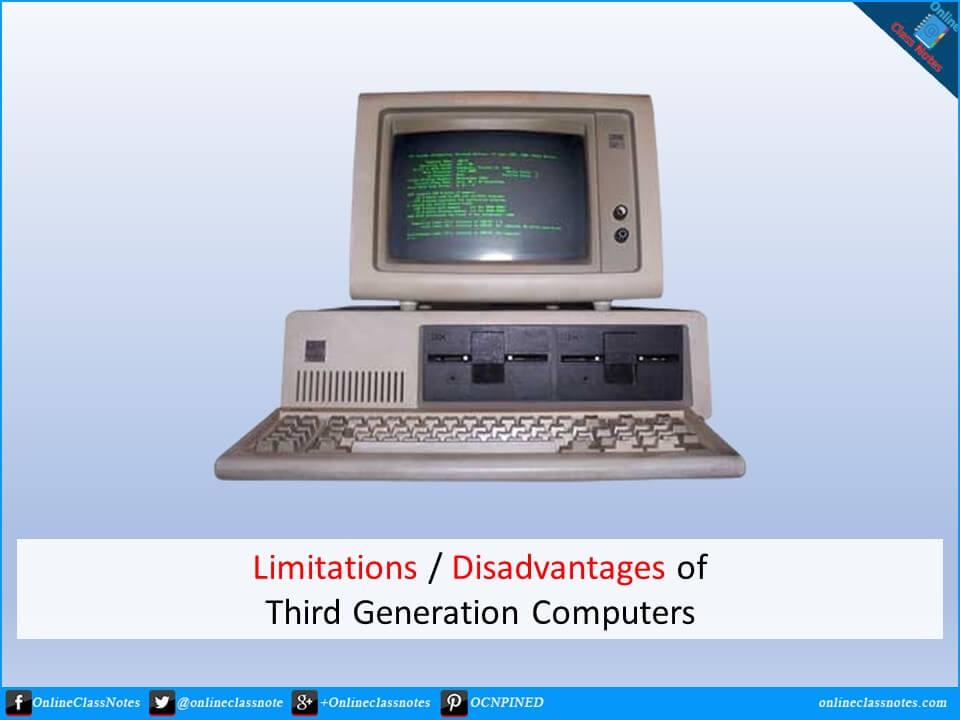The third generation of computers, marked by the utilization of integrated circuits (ICs), brought about significant improvements in computing capabilities. However, along with these advancements, there were certain limitations or disadvantages of third generation of computer which are described here.
1. Size and Portability
Although more compact than their predecessors, third generation computers still lacked portability due to their size. This limitation hindered their deployment in various settings and restricted user mobility.
2. Heat Generation
The enhanced processing power of third generation computers led to increased heat output, necessitating efficient cooling mechanisms. Failure to manage heat effectively could result in system instability and hardware damage.
3. Complexity and Cost
The introduction of integrated circuits brought complexity to manufacturing and maintenance processes, resulting in higher costs. This complexity required specialized expertise for repair and maintenance, contributing to elevated operational expenses.

4. Software Compatibility
The adoption of new architectures posed challenges in terms of software compatibility with previous generations. Existing software had to be adapted or rewritten, consuming resources and potentially introducing errors.
5. Technology Obsolescence
The rapid pace of technological advancement quickly rendered third generation computers outdated. This meant that investments made in these systems might become obsolete within a relatively short period.
6. Reliability
Despite improvements, the intricate nature of integrated circuits meant that hardware failures were still a possibility. A single malfunctioning component could disrupt the entire system’s functionality.
7. Memory and Storage
While memory and storage capacities were enhanced in third generation computers, they remained limited compared to contemporary standards. This limitation constrained the amount of data that could be processed and stored, impacting the system’s ability to handle large and complex tasks.
8. Power Consumption
The increased processing power of third generation computers led to relatively higher power consumption. This not only escalated energy costs but also posed environmental concerns as power-hungry systems became more prevalent.
9. Compatibility Issues
Different manufacturers produced distinct lines of computers, leading to compatibility challenges between systems. This hindered the exchange of data and software between computers from different vendors.
10. User Interface
User interfaces primarily relied on text-based command-line interactions, lacking the graphical interfaces of today. This limited the ease of use and accessibility for users, requiring familiarity with specific commands.
Read Next: 10 Characteristics of Third (3rd) Generation of Computers